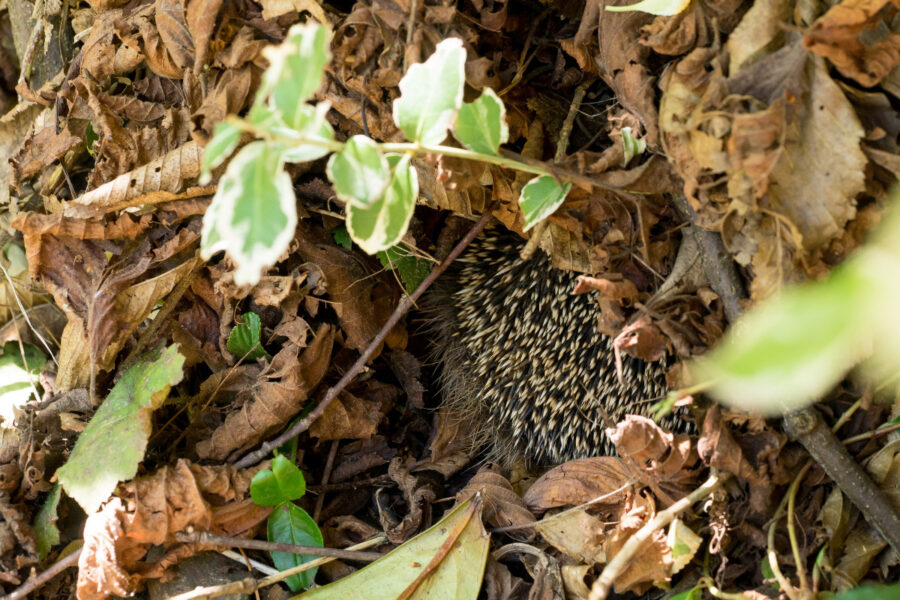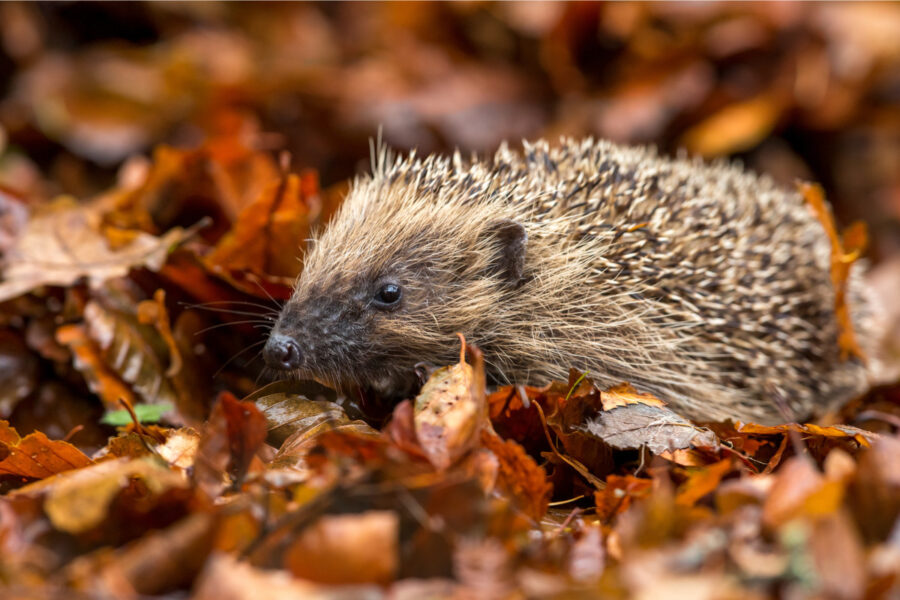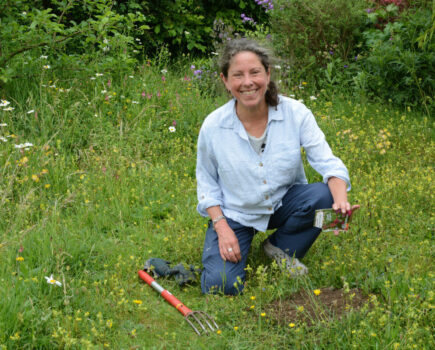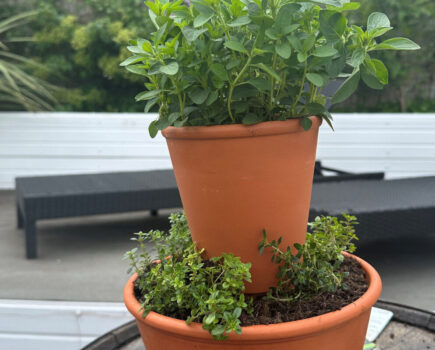Olivia Watts from the Field Studies Council explains how to keep hedgehogs happy this autumn.
At this time of year, hedgehogs are busy gathering food and finding a suitably snug place to hibernate. Unfortunately, their populations across Britain have undergone a historic decline, so it’s important to understand how our gardening choices can impact them.
Preparing for winter
With daylight hours diminishing and temperatures dropping, hedgehogs focus on preparing for the colder months ahead. As one of the few UK mammals that hibernate, hedgehogs enter a dormant state where their bodily functions dramatically slow down to conserve energy. They commonly hibernate from November to April, depending on the weather. During this time, their body temperature drops from 37°C to around 6°C, plus their metabolism and heart rate will slow down, allowing them to rely on energy from fat reserves.
In autumn, hedgehogs focus on two main tasks: fattening up and creating a safe nesting site for the long winter months.
Hedgehog diet
In preparation for the colder months, hedgehogs will eat plenty to increase their energy reserves for hibernation. Primarily, their diet consists of invertebrates, with their preference being beetles, earwigs and caterpillars. However, they are opportunistic feeders, with their diet varying throughout the seasons — they have even been known to eat amphibians and bird eggs!
From September onwards when insects become scarce, earthworms, slugs, and snails are more readily consumed. While these are very valuable food sources, they do carry parasites that can be passed onto hedgehogs, harming them if consumed in large quantities. Therefore, to nurture healthy hedgehogs it’s beneficial to encourage a diverse range of invertebrates in your garden.
Additionally, products like slug pellets should be avoided as the toxins in them can be passed through the food chain with detrimental effects.
Nesting
Hedgehogs must also find a suitable nesting site for winter. Ideal locations include garden corners, behind sheds, or in piles of logs and twigs. Once settled, they will gather materials such as dried leaves and grass to help keep them cosy. It’s worth keeping a stack of logs or a pile of leaves in the garden to provide some much-needed help for these iconic animals — plus other species that shelter throughout the winter.
Do please remember to build any bonfires on the actual day of burning. This ensures you don’t have any unfortunate creatures hiding inside stacks of vegetation.

Frequently asked questions
Q. I’ve found a hedgehog out in winter, what should I do?
A. Hedgehogs are known to wake up during mild winter weather to forage and top up energy stores. They may also move nesting sites during this time. However, a hedgehog may need help if it is out in daylight, looks small or underweight, or has visible injuries. Dedicated charities and local rescue centres can offer advice and the best course of action.
Q. What can I feed hedgehogs?
A. In a safe place in the garden you can put out specific hedgehog food, or wet cat or dog food. Clean dishes regularly and leave out a shallow dish of fresh drinking water.

Interested to learn more about garden wildlife?
You can find out more about garden wildlife with courses and guides provided by the Field Studies Council: www.field-studies-council.org
Find more tips, advice and articles like this at the Amateur Gardening website. Subscribe to Amateur Gardening magazine now





